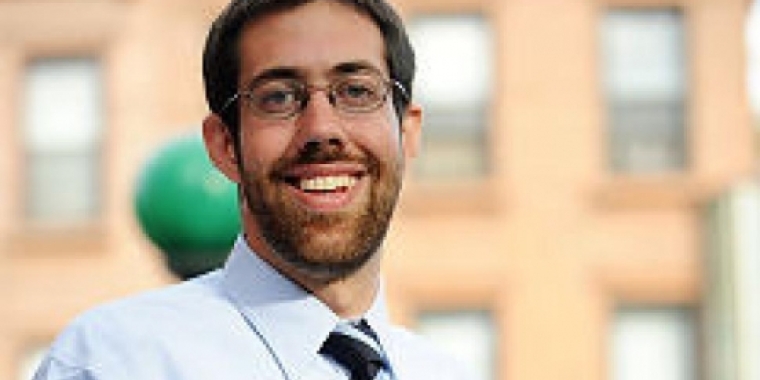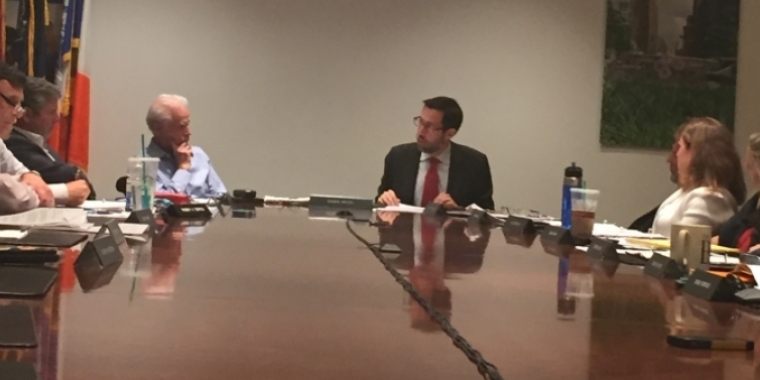
Upstate Left Behind: Job Loss, Policy Challenges, And A New Path To Create Jobs Across New York State
December 17, 2015

Initiatives will Grow Jobs by Investing in Infrastructure, Job Training, Small Business Aid, Green Jobs and Agriculture
(Albany, NY) The Senate Democratic Policy Group today unveiled a white paper titled ‘Upstate Left Behind: Job Loss, Policy Challenges, and a New Path to Create Jobs Across New York State’ that outlines the crisis impacting the upstate economy as well as policy initiatives to reverse the stagnation and downward trend and help bring new jobs to the region. This white paper is part of the Democratic Policy Group’s mission to make New York a more affordable state to live, work and raise a family.
The Senate Democratic Policy Group white paper demonstrates that while New York State has experienced four years of comparatively steady job growth since 2010, the Southern Tier, Mohawk Valley, Central New York and North Country regions have all experienced employment declines over that time. These regions and others upstate have suffered due to a lack of investment or support from the Senate Republican Majority which is why the Democratic Policy Group unveiled over forty specific, non-partisan initiatives to help struggling upstate regions grow economically and attract new businesses, residents and opportunities. The Senate Democrats understand that for New York State to prosper, the upstate economy must be strong and that requires infrastructure investment, mandate relief and state support to grow small businesses as well as the green technology and agricultural sectors.
“Any plan for moving the New York economy forward must include efforts to create quality jobs and lasting economic development for upstate communities,” Senate Democratic Leader Andrea Stewart-Cousins said. “For too long, upstate New York has not received the focus and state aid it requires to once again be a vibrant and economically prosperous region. The Senate Democratic Policy Group has produced a white paper outlining the problems facing the upstate economy, as well as our proposals for sustainable upstate revitalization. We are one New York and when upstate flourishes so does our entire state.”
Senator Daniel Squadron, Democratic Policy Group Chair, said, “Albany spends a lot of time on the politics, but not nearly enough time tracking down real solutions to the problems everyday New Yorkers face. As this report shows, many in the state, especially upstate, have been left behind when it comes to good jobs. And, it also shows this problem is not inevitable. We’ve identified dozens of ideas that would create good jobs and help communities across the state, and hope the Senate Majority will work with us on these initiatives. I thank Leader Stewart-Cousins and the Democratic Conference, especially Policy Group members Senators Latimer, Montgomery, and Serrano.”
Policy initiatives discussed in the Senate Democratic Policy Group’s white paper include:
- Increased infrastructure investments in addition to basic maintenance, especially in places across New York State that have experienced industrial job loss.
- Utilize settlement funds for direct investment in upstate infrastructure projects.
- Create a state infrastructure bank to facilitate infrastructure investment as a complement to other forms of funding.
- Explore the leasing of state property for installation of “small cell” and other technologies and assist localities to do the same.
- Consider approaches to increasing broadband access undertaken in other states, such as state-led federal-state partnerships, regulatory changes and facilitation of private investment without state or local funding.
- Take advantage of the job-creating potential of green technology and energy efficiency, which can save money while creating good jobs for New Yorkers.
- Help interested localities acquire and deploy LED street lighting to achieve savings and increased safety.
- Make low-interest loans for alternative energy and efficiency upgrades more available, especially for hospitals and multiple dwellings.
- Expand the market for digesters that turn trash into energy.
- More assistance to small businesses and micro businesses who are a primary source of jobs in New York State.
- Increase the state revolving loan fund to provide capital for small businesses, especially micro businesses, which have the most potential for growth and the least access to current support.
- Provide opportunities targeted to veterans as a part of increased loan and technical support to small and micro businesses.
- Develop a state version of federal programs that subsidize partial salary for hiring long-term unemployed, as in other states.
- Expand markets for New York agriculture and support our farmers to grow more jobs in this sector.
- Allow agencies flexibility to prefer bids from in-state producers for food purchases and set targets for such purchases by government.
- Increase the “small purchase” threshold for food purchases to make it easier for small farmers to sell to government and government institutions.
- Assist more farmers to obtain federal and other grants and other assistance to defray costs of aggregating and transporting agricultural products.
- Provide greater aid to local governments across New York State.
- Attract new residents to upstate localities, through location-based mortgage incentives, direct geographic housing incentives, or other programs.
- Create a statewide “arts and cultural district” program, as in fourteen states.
- Provide small “planning grants” to assist under-resourced localities to better participate in state and federal competitive grant programs.
- Job Training and readiness investments to curb the loss of young and working-age people from upstate communities.
- Expand youth training programs like New York YouthBuild and Summer Youth Employment.
- Enhance career/technical education (CTE), including to better facilitate college credit for CTE courses, increase CTE enrollment and link CTE programs to workforce needs.
- Develop a state service corps, possibly including green/conservation, early childhood, health, arts and other tracks.
Senate Democratic Deputy Leader Michael Gianaris said, “Real leadership and meaningful proposals can bring lasting development to upstate New York and restore it as a thriving economic and agricultural powerhouse. To reverse the trends that have led to upstate's decline the Senate Democratic Policy Group developed a plan that includes targeted state investments in infrastructure, sustainable industries and green jobs, small and micro businesses, rural broadband access, municipal aid and tax relief. Upstate New York needs more than the same old political games and lip service to flourish, and the Senate Democratic proposals will ensure this region, and all of New York, becomes more economically stable and prosperous for generations to come.”
One of the key policy initiatives discussed in the Senate Democratic Policy Group’s white paper is increasing investment in upstate roads, bridges and vital infrastructure, all of which have been neglected for too long. Such investment would help directly create thousands of good paying jobs, as well as grow local and regional economies throughout upstate communities. This economic growth, combined with repaired and modernized infrastructure, would help reverse the trend of population decline that has devastated upstate communities and encourage more people to live and work in upstate New York.
Senator George Latimer, Democratic Policy Group Member, said, “I am pleased to have the opportunity to serve on the Senate Democratic Policy Group. I believe it is essential to revitalize the economy of our state from end to end, and this white paper we are releasing provides a framework for our state to build on what has already been accomplished.”
Senator Velmanette Montgomery, Democratic Policy Group Member, said, “For New York State to be a more affordable place to live, work and raise a family, we need fresh perspectives and new ideas on how to grow our economy and improve New Yorkers' lives. That is why the Senate Democratic Policy Group was created and I am proud of the initiatives we've put forward to help struggling upstate communities. Government has a responsibility to improve the lives of all New Yorkers, and I look forward to continuing the work of the Senate Democratic Policy Group and advocating for implementation of our proposals.”
Senator Jose Serrano, Democratic Policy Group Member, said, “The Senate Democratic Policy Group was created to present innovative policies and initiatives that will help grow the state economy and improve the quality of life for all New Yorkers. The white paper detailing the problems facing the upstate economy as well as suggested actions to help reinvest in upstate communities is a realization of our policy group's core mission. The Senate Democrats will continue to advocate for common sense approaches to address the problems facing New York State as well as bold initiatives to grow the Upstate economy.”
For a full copy of the Senate Democratic Conference Policy Group’s white paper, ‘Upstate Left Behind: Job Loss, Policy Challenges, and a New Path to Create Jobs Across New York State,’ please visit: https://www.scribd.com/doc/293359176/Upstate-Left-Behind-Job-Loss-Policy-Challenges-and-a-New-Path-to-Create-Jobs-Across-New-York-State
To review Senate Democratic legislative proposals please visit: http://www.scribd.com/doc/293347317/Summary-Of-Legislative-Initiatives-For-Consideration-To-Address-Policy-Proposals
Claire McKenna, Policy Analyst at the National Employment Law Project (NELP), a national non-profit organization based in New York City that engages in public policy research and advocacy on behalf of unemployed and lower-wage workers, said, “NELP is committed to strengthening the economic security of out of work New Yorkers, by supporting strong state unemployment insurance policies and other effective reemployment strategies. We commend the New York State Senate Democratic Conference for their continued attention to the crisis of long-term unemployment—which has fallen since reaching record levels over the Great Recession, but which remains elevated in New York State and across the country—and for recognizing the critical role of subsidized employment programs as a key policy response. Significant research shows that properly structured wage subsidy programs can provide jobs for the long-term unemployed that pay a fair wage and serve as a bridge back to permanent, unsubsidized work. Establishing a subsidized employment program now will not only improve the employment and earnings prospects of New Yorkers still struggling with extended spells out of work, but it will ensure preparedness for the next economic recession when the need for such intervention will be even more critical.”
Aileen Rohr, Hyde Park Town Supervisor, said, “As Hyde Park seeks to be a 21st century community, New York State can provide the resources that would enable us to do so. Aging or non-existent infrastructure in our town center limits our ability to promote the redevelopment of our existing cores to accommodate the type of housing and amenities that young families and retirees desire. By directing monies to our centers for infrastructure, we can provide the critical ingredient needed for investment and that is confidence in the future. Programs that provide incentives for those willing to invest in existing buildings in good locations, rather than monies for new developments in obscure locations, are needed in towns all over New York State to create attractive, vibrant communities. Two available options - tax credits through the income tax system to promote renovation and investment as well as a system to reduce the local tax burden for those willing to invest in existing properties in key, downtown locations would go a long way to changing the landscapes of our communities.”
David Haight, New York State Director of the American Farmland Trust, said, “Bringing more food grown in New York into schools, colleges and other institutions is good for all New Yorkers as it supports our economy and the health of eaters in these institutions. We appreciate the attention of the Senate Democratic Conference on these important issues.”
Sam Anthony, PE, President of the Rochester Section, American Society of Civil Engineers, said, “The Report Card for New York’s Infrastructure clearly shows that we are behind on our investment in infrastructure to stay competitive. To improve our ‘D+’ bridges and ‘D-’ roads, we need to work with our elected officials to prioritize funding solutions in the next legislative session and protect infrastructure investments that support New York jobs.”
Cliff Majersik, Executive Director of the Institute for Market Transformation, a nonpartisan, nonprofit organization that promotes energy efficiency in buildings in the United States and abroad, said, “American building owners spend over $400 billion annually on energy use. Our research has estimated that building energy efficiency initiatives can generate tens of thousands of jobs by increasing demand for energy efficiency services and driving reinvestment of energy cost savings into the economy. For example, benchmarking and transparency programs—which call for measuring and tracking building energy use over time—enable tenants and investors to compare building efficiency and encourage owners to manage their buildings more cost effectively and use energy more strategically. In addition, giving the market better information about building performance unlocks demand for energy-efficient products and skilled workers.”
Sarah Barcomb, YouthBuild Coordinator, Mohawk Valley Youth Build, Utica, NY, said, “YouthBuild programs are a proven way to provide work experience and training, grow jobs and provide opportunity to young people in upstate New York and around the state. Additional support and expansion of YouthBuild programs will allow more New Yorkers access to this valuable jobs resource.”
Rachel Zinn, Executive Director of the Workforce Data Quality Campaign, said, “We applaud New York State legislators for highlighting workforce data as an important strategy for economic growth. Better information enables better choices. Workers can pick training programs that give them in-demand skills, businesses can hire qualified workers to help them succeed, and state leaders can direct resources to workforce programs that give people real opportunity and support New York’s economy.”
Enola Rijos-Pinerio and Isiah Hawley, YouthBuild Students, said, “The New Directions YouthBuild/AmeriCorps program has taught us how to ‘give first rather than receive.’ The program has provided us with options to the future and possibilities of pursing higher education and college. We are very grateful of the program because it has provided us opportunity to become Disaster Prepared, serve the homeless and less fortunate in my community, and improve my outlook on my future . Any increase in funds will be used to assist students with their transition from HSE to college and used to address the needs of the Poughkeepsie and Dutchess County communities. We strongly believe that funding would help motivate and encourage our current and future YouthBuild/AmeriCorps team members to serve others.”
Joyce A. Klein, Director, FIELD, The Aspen Institute, said, “We’ve been working with microenterprise programs for more than ten years to help them capture the outcomes of their work. Our research has found that these initiatives support jobs and job growth in a cost-effective way. For example, our most recent surveys found that employment at microbusinesses grew by 107% after they received assistance from a microenterprise program, and the cost per job supported was around $2,100.”
Andrea Jung, President and CEO of Grameen America, Inc., said, “Microfinance is a tested and proven job creation strategy in New York. The economic and social benefits of expanding access to capital to New York’s un- and under-banked population are tremendous,”
###
Share this Article or Press Release
Newsroom
Go to NewsroomMy Open Letter to President-elect Trump in The Daily Beast
November 12, 2016

Squadron Responds to Charges Against Marolda Properties
November 2, 2016


